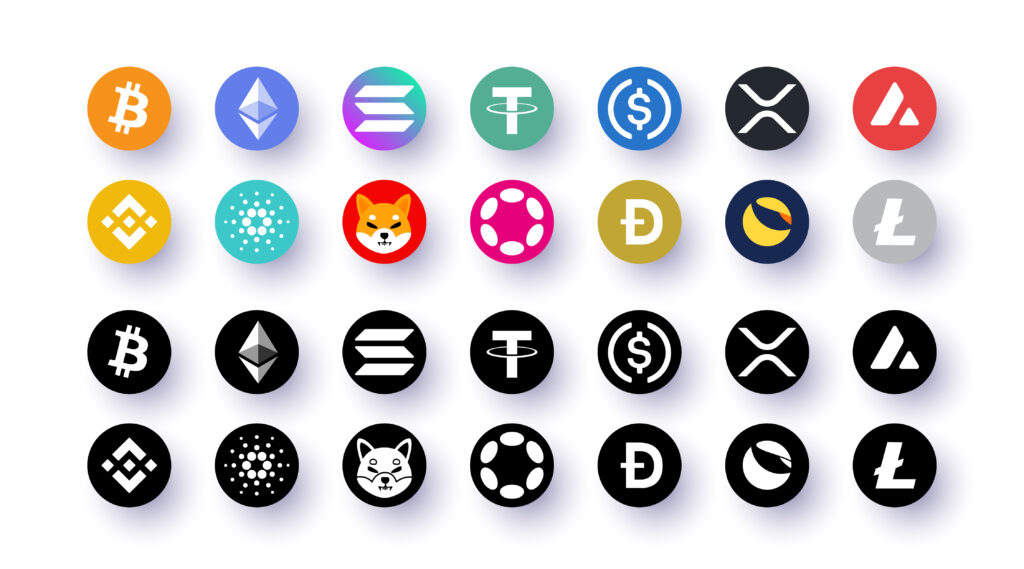Short Summary:
Stablecoins are the future of payment landscapes as they bring digital transactions, easy AML compliance, consumer security, and other financial upgrades.

Cryptocurrencies are no longer limited to economists after they went public in 2009. Their inexorable adoption rate and roller-coaster volatility made some millionaires while the rest are nursing hefty financial losses. The total crypto market is currently at $1.18 trillion, which marks a noticeable hike from $910.3 million in 2021. Understandably, cryptocurrencies lack stability, therefore, till when will they hold this rank?
Stablecoins – a type of digital tokens whose value is pegged to stable assets such as US dollar or gold, try to maintain market fluctuations in cryptocurrencies. Tether, USD coin, binance token, and Magic Internet Money (MIM) are the most famous examples.
Stablecoins are the future of money, read along to witness this prediction becoming a reality.
The Inception of Stablecoins and Their Jump Right Into Controversies
Launched in 2014, BitUSD classifies as pioneering stablecoin and the brainchild of Dan Larimer and Charles Hoskinson. Since then the market worth of pegged cryptocurrencies has seen unexpected growth reaching $138.4 billion in January 2023. Stablecoins came up to induce stability in the crypto market and negate its speculative nature. Later, market experts saw that they can also survive traditional market disasters governing adverse financial crises like the South Sea bubble, Tulip Mania, and Mexican Default.
To state the obvious, stablecoins have come up with major changes afoot for regulators, investment giants, central banks, and the whole finance sector. Beyond doubt, these digital tokens are a host of benefits but have also bought real risks accompanied by controversies.
The Tether Controversy
The highly performing coins are sometimes the most controversial. Tether, for instance, has faced backlash as analysts claim that it is a threat to the whole crypto ecosystem. After hitting a major hurdle in 2018, critics argued that this stablecoin is not backed by the real USD dollar. Instead of running an audit trail, the company parted ways with inspection firms which cost them $18.5 million paid as penalty to the State of New York.
The Pros and Cons of Stablecoins are Debatable
Economists claim that stablecoins are home to financial benefits which include safe, lower-cost, and real-time payments. They enable businesses to process cheaper transactions and governments can run conditional cash transfer programs swiftly. Stablecoins have also bridged unbanked and underbanked segments of the world with financial systems.
On the dark side, critics see stablecoins as a threat to digital financial habitat if they operate without legal and economic frameworks. These cryptocurrencies can also collapse similar to turmoil of “wildcat” banks. As new technology can bring several risks, without a refined and regulated system, stablecoins will be anything but stable.
Stablecoins Upgrade Traditional Money as the World Has Known It
Financial systems across the globe are applying different approaches to see how the digitization of money will play out. China is the first country that has made a bold statement in moving towards online payments by deploying digital Renminbi. Hence, the rest of other countries are following by introducing their own stablecoins.
Stablecoins Are More Private and Less Public
Making changes in the existing money can be complex. The private financial sector, a system that handles deposits against commercial banks, in the United States and elsewhere didn’t succeed in deploying digital monetary services. But stablecoins have the potential to redefine it. Whilst they replace paper money with digital token, pegged cryptocurrencies also ensure financial stability, AML compliance, consumer protection, and crime prevention.
Three Paths to Sound Digitisation of Money
Having spent more than four years around stablecoins, regulators analysis, and critics feedback, there are three simple ways to safely harness the digital currency technology.
- True Stablecoins
Original or the true stablecoins refer to the type of tokens whose values are fixed against a reference currency like USD and Euro. Given their secure exchange nature, these non-interest bearing coins survive through stressed market conditions with high liquidity.
- Central Bank Digital Currencies (CBDC)
In order to be fully transformative, CBDC providers must combine cash with digital asset rails. Where paper money is a liability of central banks, stablecoins are arrears of private sector issuers. Combination of both will not only increase degree of resilience but also bring innovation directing towards sound money transformation.
- Deposit (Stable) Coins
Stablecoins fall in various categories when it comes to their nature of investments. Where true coins are non-interest, deposit tokens can be claimed against pledges with insured commercial banks. Low-cost stablecoins can also be used for lending as they are secured by the Federal Deposit Insurance Corporation (FDIC).
Stablecoins are the Fixes for Cracks in Money Transformation Risks
Since the cryptocurrencies took over, blockchain technology is seen as another “software eating the world”. Being all set to deliver its potential, countries should also be well prepared for market failures, price manipulation, and strict regulatory scrutiny. However, careful AML monitoring and risk assessment control will not let the private financial sector suffer from legal risks.
Beyond question, despite involves risks, stablecoins will introduce the world to a new generation of financial institutions with the following derivatives:
- The Use of Secure Digital Wallets
The White House Executive Order issued in March 2022 covered massive ground while addressing digital assets-related KYC/AML compliance risks. Later in April 2022, Rishi Sunak, Prime Minister (PM) of UK stated,
“It’s my ambition to make the UK a global hub for crypto-asset technology, and the measures we’ve outlined today will help to ensure firms can invest, innovate and scale up in this country.”
With all this being said, the UK’s government is making efforts to improve security of digital wallets which is one of the major cornerstones of digital currency exchange.
- Digital Asset to Become the Easiest Trading Option
Trading back and forth in cryptocurrencies from fiat was not an easy task years ago when blockchain was in its infancy. Stablecoins emerged as a result-driven and secure solution to this crack. Due to low-cost exchange and low vitality, they remain the easiest mode of digital asset trading.
- Gaming and In-Game Digital Purchasing
The gaming industry has been undergoing technological shifts as tennis becomes virtual racquet, chess reaches websites, and snooker can be played on cell phones. The same blockchain technology that backs cryptocurrencies is transferring ownerships to players.
Fiat currencies involve additional GST or regional taxes but stablecoins make them cheaper, swift, and easier. Not just this, they are also “programmable” by establishing smart contracts inside CBDCs.
What’s Next in the Sphere of Stablecoins?
Stablecoins have become an alternative to long-in-use payment methods. However, their economic impact justifies why they should be regulated. Left alone and AML monitoring-free, stablecoins can lead to misfortune. Given their benefits, governments are aligning both legal and AML security efforts to expand the reach of digital assets. Hence, coupled with advanced AML solutions, stablecoins are soon going to become the new mode of transactions, payments, and every money-involved exchange.
Personal Note From MEXC Team
Check out our MEXC trading page and find out what we have to offer! You can learn more about crypto industry news. There are also a ton of interesting articles to get you up to speed with the crypto world. Lastly, join our MEXC Creators project and share your opinion about everything crypto! Happy trading!
Join MEXC and Get up to $10,000 Bonus!
Sign Up


